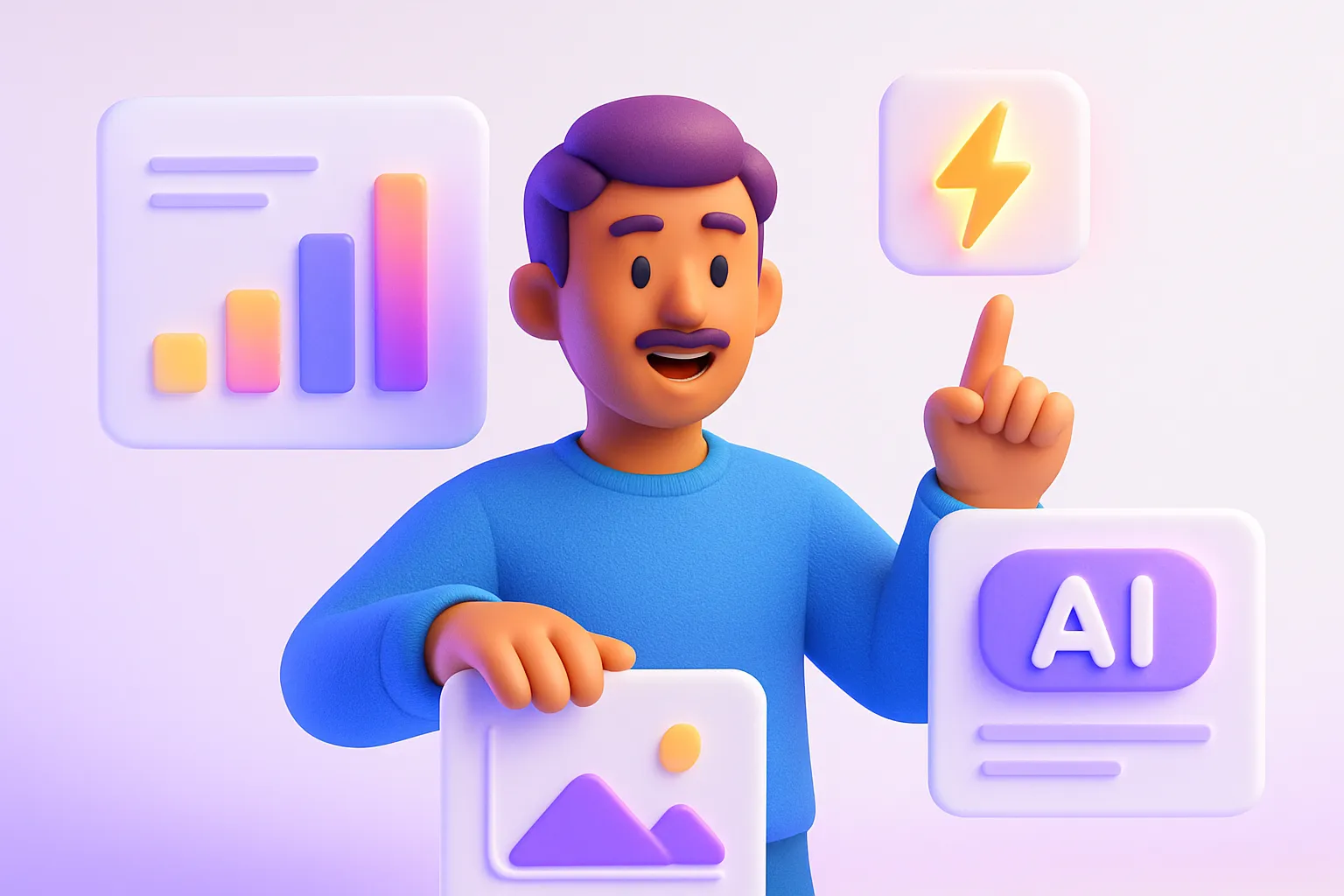Leveraging AI for Scalable Content Creation in Agencies

Why Agencies Need AI Now
Clients want more content, more often, across more channels. Margins, on the other hand, keep shrinking. AI lets agencies resolve that tension by taking the first draft, or the first thousand drafts, off your plate. Early adopters already trim production time by half and redirect writers to higher-value strategy tasks.
What You Gain When Machines Draft First
- Speed. One prompt can turn a spreadsheet of product specs or keyword clusters into hundreds of assets in minutes.
- Consistency. Train a model on brand guidelines once and every future snippet sticks to tone and style.
- Personalization at scale. Dynamic copy that changes by persona, funnel stage, or region becomes realistic, not wishful thinking.
- Smarter spend. Fewer billable hours lost to grunt work means budgets stretch further and profit stays intact.
Tools Worth Testing Today
conbase.ai
conbase.ai turns CSV rows into finished assets through a visual pipeline builder. Drag, drop, and define prompts once to pump out meta descriptions, email sequences, or blog intros for up to 10,000 records. Version control and detailed logs keep clients confident.
Typeface Arc
Arc studies past campaign data then drafts emails, SMS, and ad copy that match proven patterns. Agencies get a head start on multichannel campaigns without babysitting multiple dashboards.
Adobe AI Agents
Adobe’s new AI agents plug into existing Creative Cloud workflows, pulling engagement data to fine-tune images and copy suggestions in real time.
Omneky
Omneky autogenerates and tests ad creatives across LinkedIn, Snapchat, and connected TV. Performance data loops back into the model for nonstop optimization.
Pictory
Pictory flips blog posts or scripts into snackable videos, giving clients another format without spinning up a production crew.
Zapier
Zapier connects the dots between apps so drafts move from generator to editor to CMS automatically. Over 7,000 integrations mean you rarely need code.
Building AI Into Your Workflow
- Map repetitive tasks. List every recurring content step: research, brief, draft, QA, publish.
- Pick one quick win. For most agencies that’s drafting meta descriptions or weekly social posts.
- Create a pilot pipeline. Use conbase.ai to merge client data with prompts and push results to Google Sheets or your CMS.
- Set human checkpoints. Editors verify tone and compliance before anything ships.
- Measure time saved. Compare hours and error rates against the pre-AI process, then iterate.
Real-World Wins
- Scuderia Ferrari Fan App. IBM’s watsonx-powered app personalizes real-time race updates for millions of users, proving AI can keep pace with live data and still feel human.
- The Brandtech Group. The AI advertising start-up raised $115 million and hit a $4 billion valuation by churning out machine-generated ad content faster than traditional teams.
- Omneky Campaigns. Agencies using Omneky report lower CPA after the platform auto-tests dozens of creative variations per audience segment (source not available).
Roadblocks To Watch
AI is powerful, but not magical. Models can hallucinate facts, miss cultural nuance, or drift off-brand. Data privacy laws may restrict the client data you can feed a model. Finally, staff may resist change if you spring automation on them without training. Address these issues early with clear guidelines, human review, and transparent communication.
Where This Is Heading
Expect generative and predictive models to merge. Instead of asking AI to write a blog post, you’ll ask it to hit a traffic target and it will plan, draft, publish, and optimize until the goal is met. Agencies that build modular AI pipelines today will bolt on these advances tomorrow without tearing workflows apart.
Related Reads From Our Library
If you’re itching for more tactical advice, check out our guides on automating social media content and AI-powered client reports. Both dive deeper into specific use cases that pair perfectly with the strategies above.



